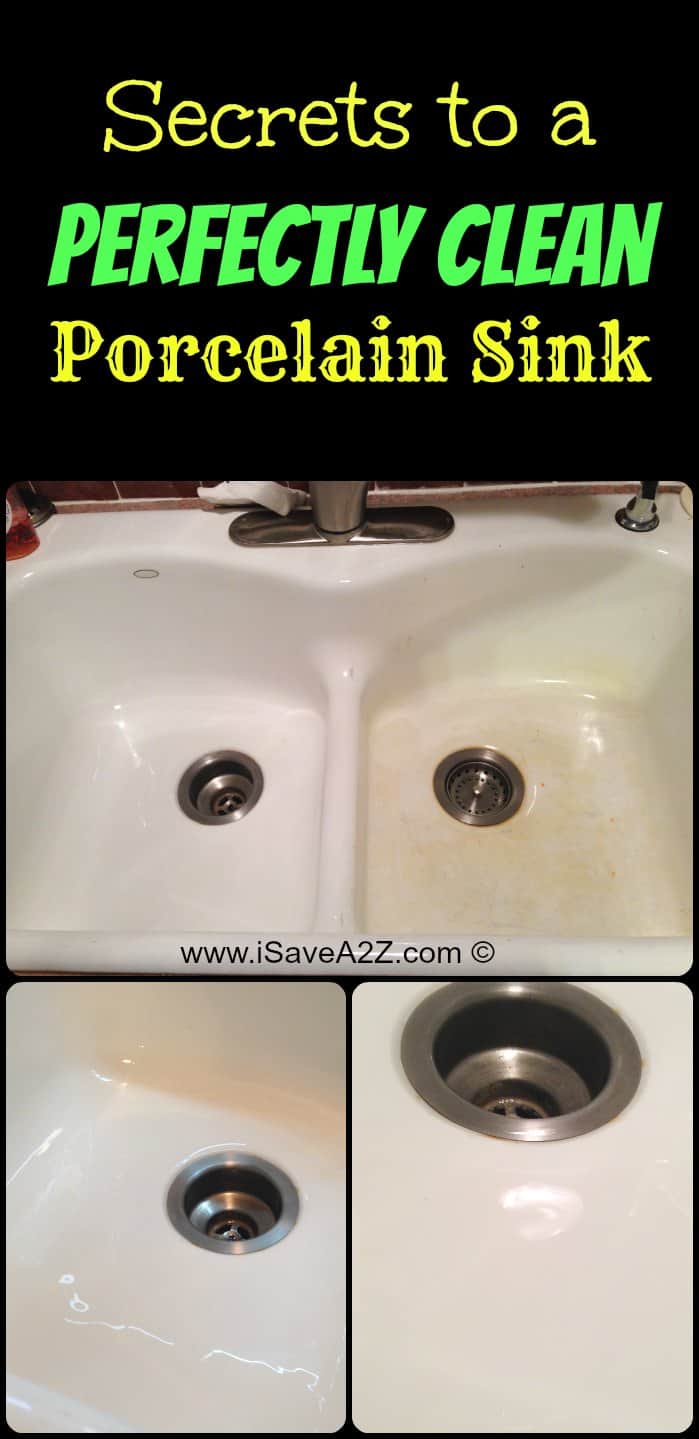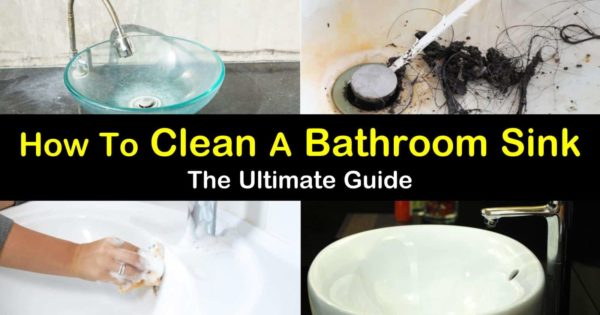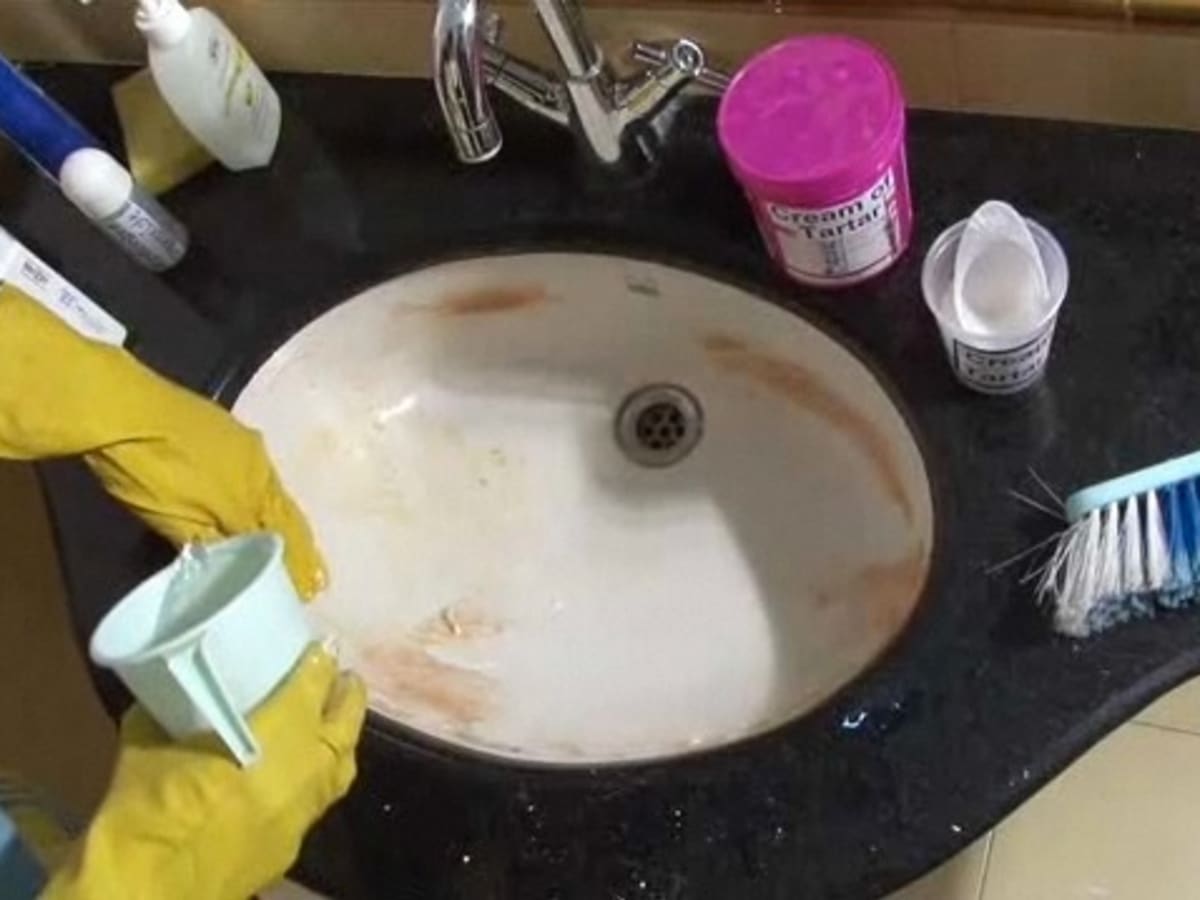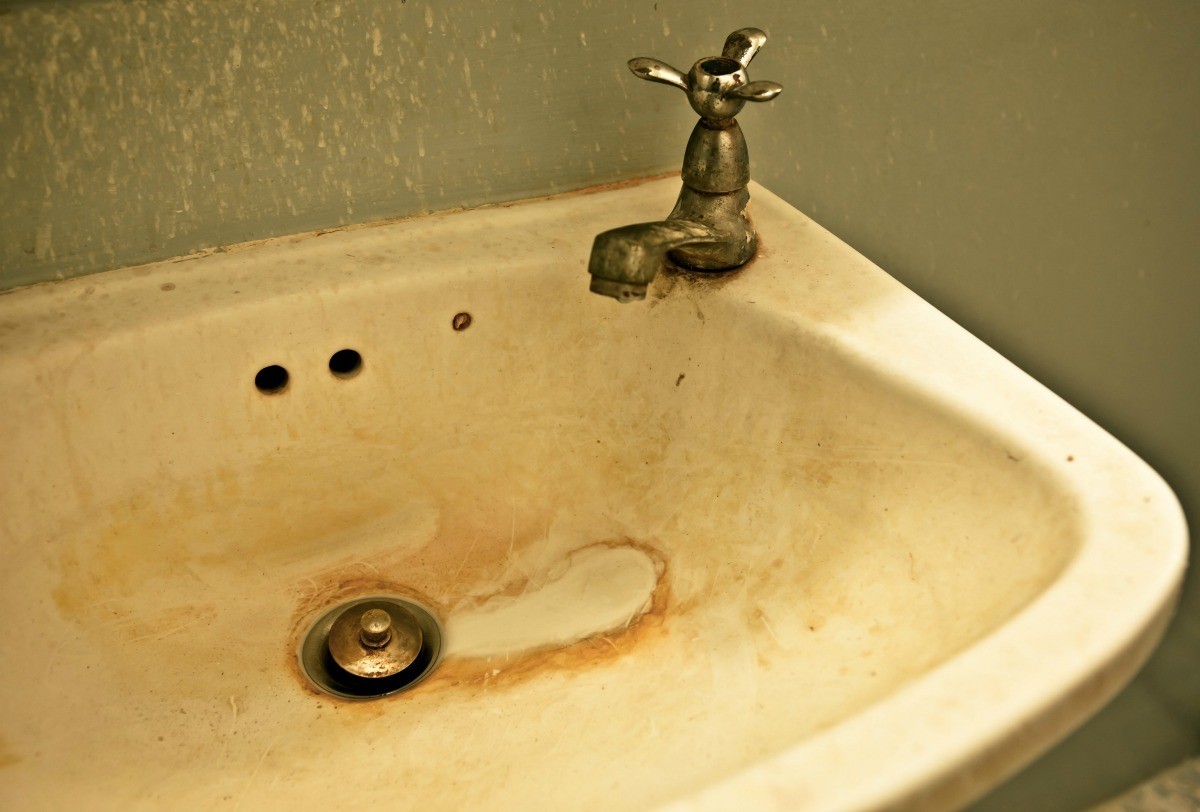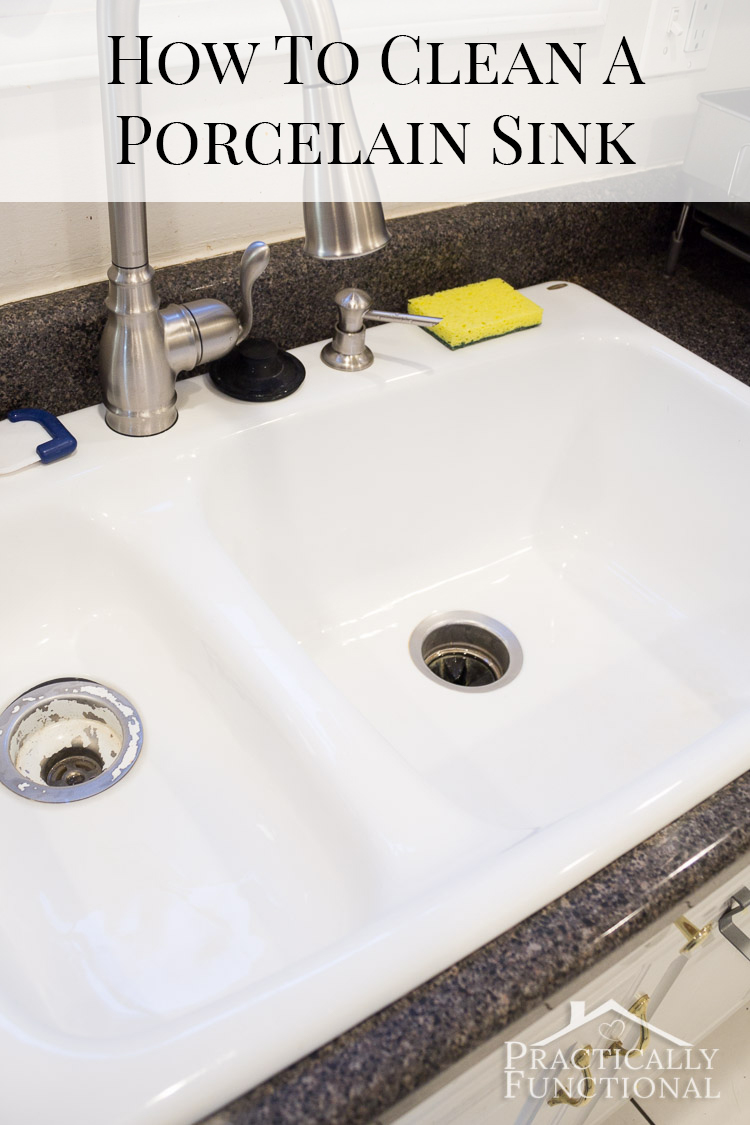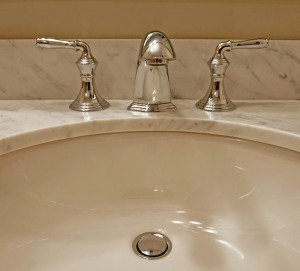Understanding the Types of Stains in Your Bathroom Sink
When it comes to keeping our bathroom sink clean, understanding the types of stains we might encounter is essential. Different stains require different cleaning approaches to effectively remove them. Let’s explore the various types of stains that commonly occur in bathroom sinks and provide insights on how to tackle them.
- Hard Water Stains: Hard water stains are caused by mineral deposits, primarily calcium and magnesium, found in water. These stains appear as white or off-white spots or rings on the sink surface. To remove hard water stains, mix equal parts of vinegar and water in a spray bottle. Spray the solution onto the stained areas and let it sit for a few minutes. Scrub the stains gently with a soft brush or sponge, then rinse thoroughly with water.
- Rust Stains: Rust stains are typically the result of metal fixtures or objects coming into contact with water. They appear as reddish-brown marks on the sink surface. To remove rust stains, make a paste by mixing baking soda and lemon juice. Apply the paste to the stained areas and let it sit for about 15 minutes. Scrub the stains with a toothbrush or sponge, then rinse well with water.
- Soap Scum: Soap scum is a common stain caused by the residue left behind from soap and hard water minerals. It appears as a white or hazy film on the sink surface. To tackle soap scum, mix equal parts of vinegar and dish soap in a spray bottle. Spray the solution onto the affected areas and let it sit for a few minutes. Scrub the stains with a non-abrasive sponge or cloth, then rinse thoroughly with water.
- Toothpaste and Makeup Stains: Toothpaste and makeup stains are often found in bathroom sinks. Toothpaste can leave white streaks, while makeup can leave colorful stains. To remove these stains, start by wiping away any excess residue with a damp cloth. Then, apply a small amount of dish soap to the stained areas and scrub gently with a sponge or brush. Rinse thoroughly with water.
- Oil and Grease Stains: Oil and grease stains can occur when skincare products, hair products, or cooking oils come into contact with the sink surface. To remove these stains, sprinkle baking soda directly onto the stains and let it sit for a few minutes. Scrub the stains with a brush or sponge, paying extra attention to the affected areas. Rinse well with water.

Effective Cleaning Solutions for Common Bathroom Sink Stains
Maintaining a clean and stain-free bathroom sink is essential for a hygienic and visually appealing bathroom. Below are some effective cleaning solutions for common bathroom sink stains. By using these solutions, you can easily remove stains and restore the shine to your sink.
Vinegar and Baking Soda: Vinegar and baking soda are versatile and effective cleaning agents that can tackle a wide range of stains in your bathroom sink. To use this solution, start by sprinkling baking soda onto the stained areas. Then, pour vinegar over the baking soda and let it fizz for a few minutes. Scrub the stains gently with a sponge or brush, then rinse thoroughly with water. This powerful combination helps remove soap scum, hard water stains, and other common stains.
Lemon Juice: Lemon juice is a natural acid that works wonders on bathroom sink stains. Its acidic properties help break down mineral deposits and remove stains effectively. Squeeze fresh lemon juice onto the stained areas and let it sit for a few minutes. Scrub the stains with a brush or sponge, then rinse with water. Lemon juice is particularly useful for removing hard water stains and rust stains.
Hydrogen Peroxide: Hydrogen peroxide is a powerful and versatile cleaning agent that can effectively remove tough stains in your bathroom sink. To use hydrogen peroxide, pour a small amount directly onto the stained areas and let it sit for a few minutes. Scrub the stains gently with a brush or sponge, then rinse thoroughly. Hydrogen peroxide is especially effective in removing toothpaste and makeup stains.
Commercial Cleaners: There are numerous commercial cleaners available specifically designed for bathroom sinks. These cleaners often contain ingredients that target specific stains, such as hard water stains or soap scum. Follow the instructions on the product label and apply the cleaner to the stained areas. Let it sit for the recommended amount of time, then scrub the stains gently and rinse thoroughly. Be sure to choose a cleaner that is safe for your sink material.
Baking Soda and Salt Scrub: For tougher stains, a baking soda and salt scrub can work wonders. Mix equal parts of baking soda and salt, then add a small amount of water to create a paste. Apply the paste to the stained areas and scrub gently with a brush or sponge. Rinse thoroughly with water. This scrub is effective in removing stubborn stains, such as oil and grease stains.
Removing Stubborn Stains from Your Bathroom Sink
Stubborn stains in your bathroom sink can be frustrating to deal with. However, with the right approach and a little bit of elbow grease, you can successfully remove even the toughest stains. We will provide you with a step-by-step guide on how to tackle stubborn stains in your bathroom sink and restore its pristine condition.
Prepare Your Cleaning Solution: Start by preparing a cleaning solution specifically tailored to the type of stain you’re dealing with. For hard water stains, mix equal parts of vinegar and water in a spray bottle. For rust stains, create a paste by mixing baking soda and lemon juice. For soap scum, mix equal parts of vinegar and dish soap. Choose the appropriate solution based on the type of stain you’re trying to remove.
Apply the Cleaning Solution: Spray or apply the cleaning solution directly onto the stained areas of your bathroom sink. Ensure that the solution covers the entire stain, allowing it to penetrate and break down the grime. Let the cleaning solution sit for a few minutes to effectively loosen the stain.
Scrub Gently: Using a soft-bristle brush, sponge, or non-abrasive scrubbing pad, gently scrub the stained areas. Apply light pressure and use circular motions to lift the stain without damaging the sink surface. Be patient and persistent, especially with stubborn or deeply ingrained stains.
Rinse Thoroughly: Once you have scrubbed the stained areas, rinse your bathroom sink thoroughly with warm water. Use a clean cloth or sponge to wipe away any remaining residue. Ensure that all traces of the cleaning solution and loosened stain are completely removed from the sink surface.
Repeat if Necessary: In some cases, stubborn stains may require multiple applications and additional scrubbing. If the stain persists after the initial cleaning, repeat steps 2 to 4 until the stain is completely removed. Be cautious not to over-scrub or use abrasive materials that could damage the sink.
Dry and Polish: After successfully removing the stubborn stain, dry the sink surface thoroughly with a clean towel or cloth. This will prevent water spots and help restore the shine of your bathroom sink. If desired, you can further enhance the sink’s appearance by applying a stainless steel cleaner or a non-abrasive polish.
Tips for Maintaining a Clean Bathroom Sink
Prevention is key when it comes to maintaining a clean bathroom sink. By implementing a few simple habits and practices, you can significantly reduce the chances of stains and keep your sink looking fresh and pristine. We will provide you with valuable tips on how to prevent future stains and maintain a clean bathroom sink.
Wipe Regularly: Get into the habit of wiping your bathroom sink regularly with a soft cloth or sponge. This will help remove any soap residue, toothpaste, or other substances that can potentially cause stains. Wiping regularly will prevent the buildup of grime and keep your sink looking clean and shiny.
Use a Sink Mat or Tray: Consider placing a sink mat or tray at the bottom of your bathroom sink. This will provide a protective barrier between the sink surface and any objects or products that could potentially cause stains. The mat or tray can easily be removed and cleaned, ensuring that your sink remains stain-free.
Avoid Harsh Chemicals: Refrain from using harsh chemicals or abrasive cleaners on your bathroom sink. These can damage the sink surface and make it more prone to stains. Opt for mild, non-abrasive cleaners or natural cleaning solutions instead. Regular dish soap or a mixture of vinegar and water can effectively clean your sink without causing damage.
Rinse After Use: After using toothpaste, mouthwash, or any other products that can potentially stain your sink, rinse the sink thoroughly with water. This will help remove any residue and prevent it from settling and causing stains. Taking a few seconds to rinse can save you from dealing with stubborn stains later on.
Address Leaks Promptly: If you notice any leaks in your bathroom sink, address them promptly. Leaking water can lead to mineral buildup and leave unsightly stains. Fix any leaks as soon as possible to prevent this from happening. Regularly check for any signs of leakage underneath the sink or around the faucet.
Be Mindful of Product Placement: When storing products near your bathroom sink, be mindful of where you place them. Avoid placing products directly on the sink surface, as this can lead to stains. Instead, use organizers or trays to keep products elevated and prevent direct contact with the sink.
Eco-Friendly Stain Removal for Your Bathroom Sink
If you prefer to use natural and eco-friendly methods for cleaning your bathroom sink, there are several effective remedies available. These natural alternatives are not only better for the environment but also safe to use and gentle on your sink surface. Here are some natural remedies for stain removal in your bathroom sink.
Baking Soda: Baking soda is a versatile and effective natural cleaner that can tackle various stains in your bathroom sink. To use baking soda, create a paste by mixing it with water. Apply the paste to the stained areas and let it sit for a few minutes. Then, scrub the stains gently with a soft brush or sponge. Rinse thoroughly with water. Baking soda helps remove soap scum, hard water stains, and other common stains.
Lemon Juice: Lemon juice is a natural acid that works wonders on bathroom sink stains. Its acidic properties help break down mineral deposits and remove stains effectively. Squeeze fresh lemon juice onto the stained areas and let it sit for a few minutes. Scrub the stains with a brush or sponge, then rinse with water. Lemon juice is particularly useful for removing hard water stains and rust stains.
Vinegar: Vinegar is a natural cleaner that can effectively remove stains in your bathroom sink. To use vinegar, mix equal parts of vinegar and water in a spray bottle. Spray the solution onto the stained areas and let it sit for a few minutes. Scrub the stains gently with a soft brush or sponge, then rinse thoroughly with water. Vinegar is particularly effective in removing soap scum and hard water stains.
Hydrogen Peroxide: Hydrogen peroxide is a natural and eco-friendly stain remover that can be used to tackle tough stains in your bathroom sink. To use hydrogen peroxide, pour a small amount directly onto the stained areas and let it sit for a few minutes. Scrub the stains gently with a soft brush or sponge, then rinse thoroughly. Hydrogen peroxide is especially effective in removing toothpaste and makeup stains.
Salt: Salt is a natural abrasive that can help remove stains in your bathroom sink. Sprinkle salt directly onto the stained areas and let it sit for a few minutes. Then, scrub the stains gently with a soft brush or sponge. Rinse thoroughly with water. Salt can effectively remove oil and grease stains from your sink.
How to Remove Stains from Cultured Marble Sinks and Shower Surrounds Ep. 80
How to Remove a Red-Brown Rust Stain from a Bathroom Sink – Howcast
Cleaning a Rust Stain on a Porcelain Sink ThriftyFun
How to Clean a Bathroom Sink: 10 Steps (with Pictures) – wikiHow
How To Get a Clean Porcelain Sink and Remove Rust Stains Too
How To Clean A Porcelain Sink (including the stains and scuff
Removing Stains from a Porcelain Sink ThriftyFun
Ways to Clean a White Sink
Related Posts:
- Modern Bathroom Sinks Small Spaces
- Copper Trough Bathroom Sink
- Anti Scald Device For Bathroom Sink
- Bamboo Bathroom Sink Cabinet
- How To Fix Leaky Faucet In Bathroom Sink
- Kraus Ceramic Rectangular Vessel Bathroom Sink
- American Standard Ovalyn Undermount Bathroom Sink In White
- Double Wide Bathroom Sink
- How To Install A Bathroom Sink Cabinet
- Bathroom Sink 17 X 14
